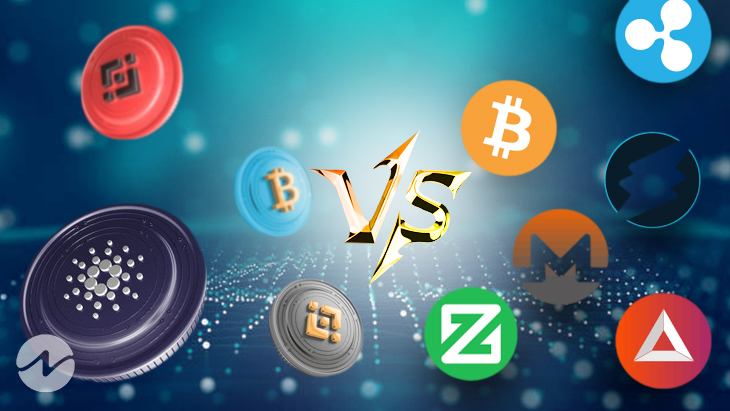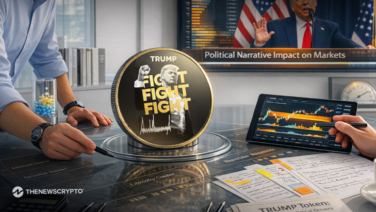Despite the wild bloodbaths in the volatile market, the hype around investing in digital assets has not declined. New investors are getting aboard to explore the legion of cryptocurrencies. Governments have also set their foot in this realm to strengthen their economic resilience. Hence, cryptocurrencies are on their path to achieving global acceptance.
Investors often tend to fail in distinguishing the two alike terms – Coins and tokens. Crypto coins and tokens both possess their unique value in the virtual space but they are not completely alike. Many crypto newbies and even crypto enthusiasts are still perplexed about these.
Let’s take a deep dive into the topic and understand how the two terminologies are in contrast with each other.
What are Coins?
Coins are cryptocurrencies that live and operate on their independent blockchain. These are considered only as sources of payment.
Bitcoin, the giant crypto coin, is the pioneer of cryptocurrencies in the digital market. All other coins that entered the market following BTC are regarded as ‘altcoins’. Ethereum (ETH) is the top rival and the largest altcoin to invade the crypto market. Ripple (XRP) is a native crypto coin on the public blockchain XRP Ledger. Other alts such as Solana (SOL), Cardano (ADA), Polkadot (DOT), and Litecoin (LTC) run on their own blockchain ecosystems.
What are Tokens?
Tokens are crypto assets that run on a non-native blockchain rather than owning an independent blockchain. These operate majorly on smart contracts of their host blockchains.
The launch of the lucrative technology, smart contracts, by Ethereum in 2015 paved the way for the creation of ERC-20 tokens. Since then, Ethereum has been the home of ERC-20 tokens and numerous other tokens. ERC-20 token model is like the “golden standard” for creating tokens through smart contracts.
Unlike coins, the functionalities of tokens fall into diverse categories in the Defi space. Based on their sole purpose, tokens are categorized into the following groups:
Utility Tokens
These tokens are specific in granting access to certain services to projects related to decentralised Apps (dApps). These are also known as governance or application tokens. For example, Binance (BNB) is a utility token for paying the trading fee on the Binance crypto exchange.
Governance tokens are prominent members under utility tokens that grant on-chain governance powers to community users. Holders of governance tokens get to be a part of the decentralized autonomous organization (DAO). Chainlink (LINK) is a governance token of Chainlink network that runs on Polkadot ecosystem.
Security Tokens
Security tokens are special kinds of tokens that serve as the digital representation of real-world stocks, objects, corporate stakes, or real estate assets.
Non-fungible Tokens (NFTs)
These are inimitable digital assets that represent any intellectual property such as artwork, picture, music, or title. These tokens are generated from the ERC-721 token standards.
NFTs are the latest craze in the crypto industry which confers proof of ownership to its holders.
Ape-based NFTs, Bored Ape Yacht Club (BAYC), Domain names-based NFTs, Ethereum Name Service (ENS), and Metaverse avatars based NFTs, Azuki, are the famous NFTs in early May 2022.
How are Coins Distinct From Tokens?
The presence of blockchain is the key difference that distinguishes both these terminologies. Coins run on their own blockchains whereas tokens run on the top of host blockchains.
The crypto coins are non-unique and serve only as payment options. For instance, the value of 1 BTC would remain uniform and the same on any platform. Whilst tokens have a multitude of specific functionalities that make them more unique than coins.
Moreover, coins don’t support governance-related utility functions such as voting mechanisms on their blockchains whereas tokens are specific to the protocol’s governance.
Divisibility is another key difference. Crypto coins can be divided into smaller units with allocated worth whereas tokens, especially the non-fungible ones, are indivisible. BTC can be divisible up to its eight decimal places and their constituent units are called satoshis. Smaller units of its rival, ether, are termed as ‘Wei’.
The price of the crypto coin is closely linked and is parallel to the profits of the native blockchain ecosystem. But the price of the token depends majorly on the success of the specific project.
Tokens are “programmable” assets that can’t be interchanged or replaced whereas Coins are interchangeable. For instance, 1 ETH can be exchanged for 1 ETH. Non-fungible tokens can never be replaced by another NFT.
Tokens that existed on non-native blockchains have migrated to their new and independent mainnet. One prominent token migration was Binance Coin (BNB) onto its own Binance Smart Chain. Initially, Binance was launched as an ERC-20 token on the Ethereum blockchain. Later on, in 2019, BNB migrated to its new blockchain, BNB Chain.
During these migrations, the tokens existing on the host blockchain should be withdrawn by the users before the shift. After the shift, users can no longer withdraw the old version of the tokens.
The current dips in the trillion crypto market are drawing in new investors into the sector. Non-crypto users seem to drive through the panic and explore the crypto world. It becomes important for investors to clearly understand and distinguish market terminologies and trends to voyage in the highly volatile market.








